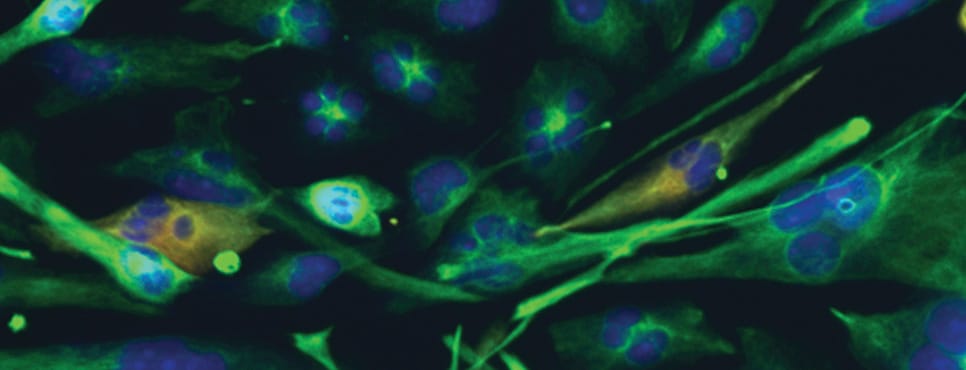Immunotherapy’s ‘Sweet’ Future: Wrapping up AACR IO 2025 With Glyco-immunology
The closing keynote session of the inaugural AACR IO painted an exciting picture of the emerging frontier of glyco-immunology, with Jessica Stark, PhD, and Gabriel Rabinovich, PhD, highlighting the profound immunological influence of glycans and the potential power of targeting glyco-immune checkpoints. Earlier on the final day of the conference, held February 23-26 in Los Angeles, Ton Schumacher, PhD, FAACR, provided an update on his PAIR-Scan technology used to evaluate T-cell receptor reactivity, offering insights into improving antigen recognition models and cell therapy designs.
Glycans and Glyco-immune Checkpoints
“Every cell in the body is coated in a thick layer of glycosylated biomolecules—proteins and lipids that are decorated with sugars called glycans,” said Stark, the Underwood-Prescott Career Development Chair and an assistant professor of biological engineering and chemical engineering at the Koch Institute for Integrative Cancer Research at the Massachusetts Institute of Technology (MIT).
These sugar-coated complexes can extend far from the cells themselves into the extracellular space. Consequently, they can be one of the first points of contact for the immune system, according to Stark. “If you’re an immune cell surveying the tissue landscape for signs of health or disease, glycans are going to be among one of the first things that you see,” she explained.

Unsurprisingly, glycans and glycan-binding molecules influence nearly every immunological process, including in the context of cancer, a hallmark of which is altered glycosylation.
Stark and Rabinovich explained how tumors can co-opt these glyco-immune checkpoints to evade immune surveillance, and revealed how targeting them might enable the next great leap in cancer care.
“Our work really stands on the shoulders of the incredible successes with checkpoint blockade immunotherapies that have been realized by the efforts of a lot of people in this room and who have been at this meeting,” acknowledged Stark.
“We have a much better understanding of the tumor microenvironment now,” echoed Rabinovich, director of the laboratory of glycomedicine at the Institute of Biology and Experimental Medicine (IBYME), as well as a senior investigator at the National Scientific and Technical Research Council (CONICET), and a professor of immunology at the University of Buenos Aires—all in Argentina. He pointed to advances in genomics, transcriptomics, and proteomics, that have allowed us to analyze genes, gene expression transcripts, and proteins, respectively—and emphasized that incorporating knowledge of the glycome will only further improve our ability to treat disease.
Sialic Acid, Siglecs, and Antibody-lectin Chimeras
The most common glycan decorating cell surfaces is sialic acid, which is recognized by receptors called Siglecs. Signaling via this pathway can dampen the activity of various immune cells, and could represent a mechanism of checkpoint immunotherapy resistance, according to Stark. She pointed to evidence that cancer cells often express more sialic acid on their surfaces, sometimes up to 30-fold higher levels compared to normal cells. Meanwhile, macrophages expressing high levels of Siglecs characterized nonresponding tumors in glioblastoma patients treated with PD-1 checkpoint blockade.
Due to the low binding affinity between Siglecs and sialic acid, Siglec-targeting antibodies alone were ineffective at disrupting this signaling at therapeutically relevant doses, so Stark’s team developed a technology called antibody-lectin chimeras, or AbLecs, that combine the high-affinity tumor-targeting capabilities of antibodies with a decoy receptor that can bind and block Siglecs. (Siglecs, along with the galectins Rabinovich spoke about next, both belong to a group of glycan-binding receptors called lectins.)

Stark first showcased AbLecs built on an HER2-targeting antibody construct, modified so that one of its binding arms was replaced with a Siglec-blocking decoy receptor. AbLecs with decoy receptors for macrophage-associated Siglecs boosted phagocytosis, while those with decoy receptors for natural killer cell-associated Siglecs boosted cytotoxicity. The former also protected against lung metastases in a cutting-edge mouse model with humanized versions of both Siglec and antibody Fc-receptor biology.
Intriguingly, AbLecs also outcompeted and outperformed the combination of HER2- and Siglec-targeting antibodies, which suggested to Stark that “perhaps what matters is what’s happening at the immunological synapse … and blocking the right Siglecs at the right time.”
Visualization of macrophages during phagocytosis provided additional support for Stark’s hypothesis that Siglecs shut down phagocytosis in its tracks, at the earliest initiation events. “For phagocytosis to be allowed to proceed, the Siglec cannot be there, it must be excluded from the immune synapse,” she said.
Lastly, Stark highlighted how the modularity of the AbLec technology allows for easy adaptation to different cancer types and immunotherapy strategies. In addition to AbLecs utilizing CD19 and EGFR-targeting antibodies, she shared data on an AbLec incorporating a PD-L1-targeting antibody that improved killing of PD-L1-expressing cancer cells compared to the unmodified PD-L1 antibody, supporting the notion that integrating glyco-immunology with conventional checkpoint inhibitors could lead to more robust anticancer strategies.
Galectin-1 and the Tumor Microenvironment
In contrast to Stark’s Siglecs, which are cell-surface receptors that bind sialic acid, Rabinovich focused on galectin-1, a “free” protein that binds beta-galactosides and can exert effects both inside of cells and in the tumor microenvironment. He described the process through which they are secreted as a “mystery,” stating that “nobody knows exactly how galectins are released.”
“Galectins have the ability to sense and respond to changes in glycosylation, allowing tumors to manipulate immune responses for their benefit,” explained Rabinovich, who has made many seminal discoveries regarding galectin-1, including how it contributes to immune evasion by modulating T-cell differentiation, altering dendritic cell interactions, and expanding regulatory T-cell populations.
He also shared new results about the connection between galectin-1 and the myeloid-deprived suppressor cells (MDSCs) known to smother anticancer immunity.
Through interrogation of The Cancer Genome Atlas and Pan-Cancer Atlas datasets, Rabinovich’s team found that high galectin-1 expression in the tumor microenvironment was linked with increased MDSC activity and poor clinical outcomes. This trend was most pronounced in patients with colorectal cancer, where they subsequently identified fibroblasts as a major source of galectin-1. While galectin-1-driven circuits appeared to coordinate the myeloid cells program that promote immunosuppression and tumor blood vessel formation, Rabinovich showed that galectin-1 antibodies could reprogram MDSCs and reduce tumor growth in mice.
Patients with hematological malignancies might also benefit from this approach. After implicating galectin-1 signaling in the progression of myelofibrosis, a rare blood cancer associated with bone marrow failure, his team used the same galectin-1 antibodies to resolve fibrosis and restore normal blood cell production.
Rabinovich left the audience with his vision for a “sweet” future for immunotherapy—one where targeting glycan interactions unlocks new therapeutic possibilities for a range of diseases.
Predicting T-cell Receptor Reactivity

Kicking off the morning, Schumacher provided an update on his team’s efforts to tackle “the grand challenge” of understanding what T cells see when they encounter antigens. With the PAIR-Scan platform that enables high-throughput screening to determine the reactivity of specific T-cell receptors (TCRs) against certain peptides, they hope to improve the accuracy of predictive models and ultimately design more effective TCR-based immunotherapies.
Schumacher also discussed his team’s effort to determine whether the current prediction models have been developed using the correct type of data, using as an example the VDJdb database that contains information about many TCR sequences and the antigens they supposedly recognize.
With PAIR-Scan, they evaluated the reactivity of TCRs taken from the database against two well-defined peptide targets, from Epstein-Barr virus (EBV) and SARS-CoV-2. Unfortunately, the team could only validate the reactivity of two-thirds of the EBV TCRs in the database, and only one-third of the SARS-CoV-2 TCRs, pointing to the limitations of the data currently used for prediction models.
“Now, we want to take the entire database, resynthesize it all, and test it in one uniform setting,” Schumacher said, reiterating the importance of high-quality databases that researchers can use for predictive models in immunotherapy.



